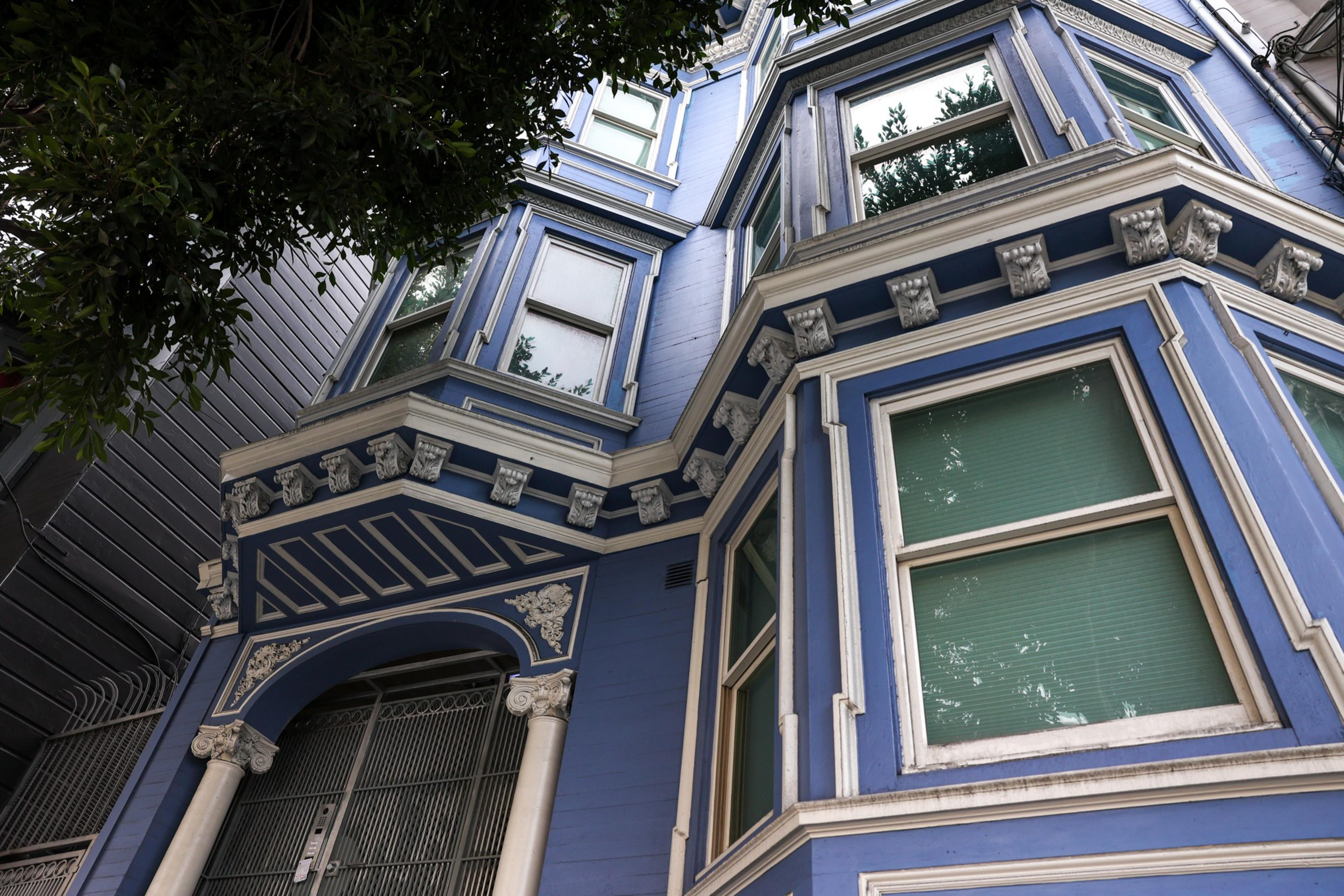The techies are at it again—only this time, they’re not looking for kombucha on tap (opens in new tab) or Patagonia vests, but all-inclusive “hacker houses” in Hayes Valley.
Artificial intelligence workers are now forming co-living and coworking communities, where like-minded founders and developers can eat, sleep and breathe their work. These communities are often operated out of historic Victorians near Alamo Square, just a stone’s throw from Souvla and a Cotopaxi outlet.
The hacker house craze has grown quickly in recent months, so much so that some in the industry are now calling the neighborhood around them “Cerebral Valley.” (For the record, we at The Standard think the techies missed a big opportunity in renaming it “HAIyes Valley).
With catchy community names like Genesis House (or its Hillsborough iteration, Neogenesis House) and an ethos that promises to optimize work via play, these communities might sound like just another Silicon Valley fad.
Yet, hacker homes are a nostalgic return to the tech world’s roots, reminding us of the Palo Alto start-up homes—known as accelerators or incubators—that once spawned tech giants like Facebook (opens in new tab). And as the generative technology industry becomes an increasingly popular and lucrative industry in the Bay Area, these hacker communities are more than just another iteration of tech’s unique lifestyle—they’re seen as the hubs of AI’s future.
Blurring the Line Between Work and Play
The hottest hacker spot in the city is said to be Genesis House, a 21-bedroom collective founded in March 2021 and operated out of a bright-blue Victorian in Hayes Valley. Genesis’ founders say that the space aims to provide their community members “all the resources” needed to start a company: community, work space and—if Google reviews are anything to go by—fun.

While Genesis House might sound like a glorified babysitting service for techies, some in the business say these kinds of hyper-communal, hybrid work-and-play spaces are exactly what the industry needs, particularly after months of dwindling office returns and sweeping layoffs.
READ MORE: Surreal Moment as Downtown SF Office Not Touched Since Pandemic Is Cleared Out
“Many people who, in the last few months, had been saying that SF is dead are now feeling like it’s really stupid if you’re not in SF and working on AI,” said Amber Yang, an investor at Bloomberg Beta. “The quality and caliber of AI startups in communities outside of SF just can’t compare.”

Yang says that former big tech employees—including those who lost their jobs during the recent market downturn—are now looking to join these AI communities and hacker houses instead, disillusioned with big tech’s corporate offerings and seeking out a community of like-minded founders as they look to launch new products.
“Compared to Covid, when everywhere was restricted and there were no events, right now the speed is so much faster and more exciting,” said Sofiia Shvets, the CEO of Claid.AI, who once lived in an eight-person founder’s house. “We’re seeing more and more hacker houses appear, events starting again and people are moving back to the city because they want to be part of a community again.”
‘Grind All the Time’
The growing popularity of hacker homes isn’t just a move away from traditional office life or solely a product of pandemic times; it has resurrected the particular grind culture reminiscent of the tech industry’s early 2000s startup days.
“The whole idea, especially when you’re building something new, is you basically work on that 24/7,” Shvets said. “It’s not the same when you go to the office, because you have to leave at some point—it’s having this 24/7 access, where you can work together with someone until 4 a.m., you discuss something, and that’s how ideas get born.”
It sounds intense, because it is. The growth of these communities reflects the increasing demand for newer, quicker AI solutions, but may pose an implicit challenge to workforce trends like last year’s quiet quitting movement (opens in new tab)—which saw employees seeking out a better work-life balance by refusing to go beyond the requirements of their jobs.
“People are excited by moving fast again,” Yang said. “When you’re remote, especially if you’re like a five-person startup, you just don’t have as much accountability. A lot of my friends working on AI companies in Hayes Valley all sort of live in their office space, they’re just working all the time—and I think that’s super exciting. If you’re living and working with your team all day long, then you’re more incentivized to just grind all the time.”

AI in the Spotlight
Some industry veterans are excited about the prospect of these hacker homes, largely because they see them as the best way to match the rapid growth and pace of the generative tech industry today.
AI is booming, both in the business world and now in popular culture, as apps like ChatGPT grow in popularity and local businesses turn to AI art for their marketing campaigns—and San Francisco serves as its unofficial headquarters.
The recent and wild success of companies like Open AI are pushing machine intelligence research into overdrive. Before OpenAI came onto the scene, machine learning research was really hard—so much so that, a few years ago, only people with Ph.D.s could effectively build new AI models or applications.
“OpenAI has almost democratized and made it easier to build these smaller companies,” Yang said. “People want to move fast, and there’s lots of competition. Whoever is going to win is going to be who gets to the market faster—and who gets to the market faster will be determined by team culture, dynamics and being in person.”
It’s a cycle that feeds itself: The popularity of programs like OpenAI is now the basis for dozens of new machine intelligence ventures and applications—and tech workers are hungry to scoop the latest innovation. The result? A lifestyle that obliterates the boundaries between what is considered work and play, but optimizes both in the hacker house hype.

A Return to Tech’s Wild West Days
The latest grind culture fostered by SF’s AI community is a far cry from pandemic-era conditions, when labor movements grew in popularity (opens in new tab) and work-life balance became easier during remote work.
And it’s not just living situations that have shifted as a result of AI’s success—a growing “neighborhood” movement seeks to transform more commercial and residential space into unofficial AI hubs, as founders seek community in the absence of an office.
Many in the AI sphere have sought out third-spaces like The Neighborhood, where Yang says founders and self-proclaimed effective altruists rub elbows. Though these hubs are rarely ever explicitly tech-focused, their position within the heart of Hayes Valley and their popularity in AI circles has made them the unofficial founder’s watering hole.
Cerebral Valley is ultimately a term coined by the founders and hackers behind the newest trends in generative tech—but it might just result in a rebranding moment and lifestyle shift for the tech world, an industry that once prided itself on its cushy work-life balance.
And the growing popularity of a more residential, neighborhoody work-life model might have broader ramifications on San Francisco, a city that has historically struggled with tech-centered gentrification (opens in new tab) and currently has millions of square feet of office space sitting empty in Downtown SF.
Nonetheless, the rise of these hacker homes feels, in many ways, like a return to tech’s Wild West era, when scrappy startups sought to change the world from the garage of a Palo Alto home—or in this case, an Alamo Square Victorian.
